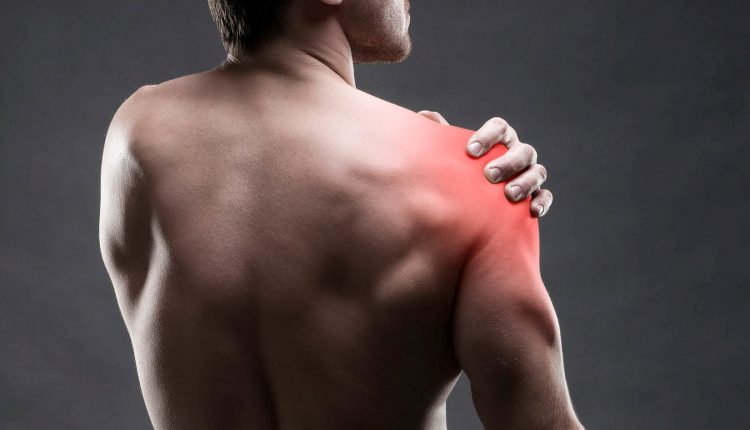
What is tendonitis and how is it treated?
Tendonitis is the inflammation of a tendon, i.e. the structure that connects muscles and bones, which causes pain and functional limitations and, if left untreated, can even lead to an injury
What are tendons
Tendons are structures that connect muscles, where they originate, to bones.
They are made of connective tissue, which is elastic and very resistant, and have the function of transmitting the force developed by the muscle to the bone.
We can call them our tendons, our steel wires without which we would not even be able to stand.
Types of tendonitis
There are 2 types:
- that which originates along the course of the tendon. The latter, running exactly like a cable, generates friction and friction on the surfaces where it runs. This type is also called tenovaginalitis;
- insertional, is localised where the tendon inserts into the bone, i.e. the point of contact between tendon and bone.
What causes tendonitis
Inflammation can develop due to:
- direct trauma
- repeated movements over time that generate friction of the tendon. In the latter case, the tendon’s inflammation can be caused by sporting or work-related overuse.
There are also tendonitis caused by a postural defect.
In particular are the insertional ones, since we perhaps force the joint to maintain a fixed position.
An example would be holding the wrist in extension, as when we use the computer mouse, for example, or in flexion, when we play the guitar.
Finally, some tendonitis is favoured by systemic diseases such as:
- rheumatoid arthritis;
- gout;
- diabetes.
The symptoms
We realise that tendon inflammation is present because first of all we feel pain along the course of the tendon, if it is a true inflammation, or because we feel pain where the tendon attaches to the bone.
The patient, in most cases, is able to indicate the area where he or she feels pain and often also to identify the bone where the discomfort originates.
There is generally an aching, burning pain that, when subjected to prolonged exertion, produces significant functional limitations.
When faced with inflammation, tendons respond not only through pain, but also by creating redness, heat and alterations in normal function at the inflamed tendon.
They also often react to chronic inflammation with thickening or, especially in the case of insertional tendinopathies and therefore at the tendon/bone interface, by developing calcifications that can be detected on X-rays or ultrasound scans.
Wrist and arm tendinitis
The most common tendinopathy is De Quervain’s, tenosynovitis, i.e. that of the thumb adductors and the thumb extensor shortus, which affects the wrist joint and is also known as the nurse’s inflammation.
Then there are less common tendinitis such as:
- that of the ulnar extensor of the carpus;
- that of the radial extensor of the carpus;
- tendinopathies of the elbow that may affect the dorsal side of the elbow (‘tennis elbow’) or the volar side (‘golfer’s elbow’), etc.
De Quervain’s tendinitis
De Quervain’s form results in painful, severe and disabling symptoms of the wrist, especially in individuals who:
- perform manual work with repetitive wrist movements;
- assume prolonged postures with flexed wrist, such as holding an infant, hence the name ‘nurse’s tendonitis’.
This tenosynovitis often requires surgery with prompt relief of the painful symptoms.
How to treat inflammation of a tendon
Treatment is very important because a chronically inflamed tendon is at risk of flaking and then tearing and rupturing especially at the bone insertion or, as in the case of the extensor thumb, which has a path close to bone spurs, may suffer subcutaneous tendon ruptures.
The first therapeutic approach is to take conventional anti-inflammatory drugs with the application of ice or anti-inflammatory ointments, which are very effective, especially for wrist tendonitis.
Often, however, the patient does not combine the anti-inflammatory with the rest needed to preserve tendon and joint, and this only prolongs the healing time.
The doctor, therefore, as a first approach asks the patient to rest from the act that causes pain by associating immobilisation with a simple brace.
When to consult the orthopaedist
If this is not enough, we move on to a slightly more specialised level of care.
The patient presents to the orthopaedist who
- makes a clinical diagnosis;
- performs manoeuvres to check which tendon is affected;
- determines what type of tendonitis it is;
- possibly performs cortisone infiltrations before immobilising the affected tendon with a splint.
The orthopaedist then refers the patient for physiotherapy to undergo:
- laser;
- ultrasound;
- tecar therapy.
In the most doubtful cases, he refers the patient for further investigations: after radiography and ultrasound, he usually suggests an MRI scan.
The latter is generally preparatory to surgical treatment, which can be performed, depending on the case, under local anaesthesia and day hospital, while, for more complex situations, actual hospitalisation is required with immobilisation of the tendon with a brace for up to three to four weeks.
Read Also:
Emergency Live Even More…Live: Download The New Free App Of Your Newspaper For IOS And Android
Finger Twitching: Why It Happens And Remedies For Tenosynovitis
Shoulder Tendonitis: Symptoms And Diagnosis
Tendonitis, The Remedy Is Shock Waves



